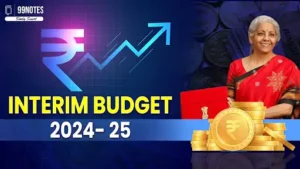5 February 2024 : The Hindu Editorial Notes PDF
The Hindu Editorial
5-February-2024
1. Micro-credentials, the next chapter in higher education.
| Topic: GS2 – Social Justice – Education Critical for UPSC as it addresses the evolving education landscape, aligns with National Education Policy, and fosters employability through micro-credentials. |
| Context |
|
Introduction:
- Higher Education Institutes (HEIs) in India should actively contribute to enhancing student employability.
- There’s a gap between knowledge acquired in HEIs and skills needed for employability.
Micro-Credentials as a Solution:
- Micro-credentials are short-duration learning activities with proof of specific learning outcomes.
- They bridge the gap by offering just-in-time modern skills and competencies.
- Offer flexibility, accessibility, and advantages over traditional degrees.
Essence of Micro-Credentials:
- Offered in online, physical, or hybrid modes at various levels.
- Contrasted with macro-credentials (e.g., undergraduate degrees) that require years of study.
- Designed for life-long learners, including working professionals.
- Terminology includes digital badges, micro-master degrees, nano-degrees, and online certificates.
Key Players in Micro-Credentials:
- Various organizations such as Atingi, Alison.com, Credly, Coursera, edX, FutureLearn, Google, Linkedin, Microsoft, PwC, and Udacity.
- Many universities globally, including Australia, Canada, Europe, the UK, and the US, provide micro-credentials.
Credit System in Micro-Credentials:
- Unlike macro-credentials, micro-credentials associate credit with notional hours spent acquiring defined competencies.
- Clear quality benchmarking and regulation needed for universal validation and recognition.
- India’s National Credit Framework (NCrF) provides a basis for credit accumulation and progression.
Fostering Trust in Micro-Credentials:
- Alignment with higher education standards in delivery, assessment, grading, and qualification awarding is crucial.
- Reliable assessment methods are essential, and HEIs play a vital role in this.
- Integration with the Academic Bank of Credits (ABC) enhances portability and stackability.
Opportunities for Indian HEIs:
- National Credit Framework (NCrF) implementation in India provides an opportunity for HEIs to develop micro-credentials.
- HEIs can partner with industries to create credit-based micro-credentials within regular degree programs.
- Broader deliberations needed on the potential impact and additional value of micro-credentials in tertiary education.
Demand for Micro-Credentials in India:
- National Education Policy 2020 focuses on providing skilled education from school to higher levels.
- Employers seek skilled employees, increasing the demand for micro-credentials.
- Millions of students may view micro-credentials as a value-added advantage.
Recommendations:
- Indian HEIs should consider introducing micro-credentials as a vital element of their strategic institutional objectives.
- Regulators and HEIs should work towards harmonizing micro-credentials with existing academic programs and establish clear validation metrics.
Conclusion:
- In conclusion, the adoption of micro-credentials in Indian Higher Education offers a timely solution to bridge the knowledge-employability gap.
- Embracing this flexible approach aligns with the evolving needs of students, employers, and the transformative vision outlined in the National Education Policy 2020.
| PYQ: The quality of higher education in India requires major improvements to make it internationally competitive. Do you think that the entry of foreign educational institutions would help improve the quality of higher and technical education in the country? Discuss. (200 words/12.5m) (UPSC CSE (M) GS-2 2015) |
| Practice Question: How can the integration of micro-credentials in Indian Higher Education contribute to the objectives outlined in the National Education Policy 2020? Discuss. (150 words/10 m) |
2. Centre’s solar initiative should be accommodative to States.
| Topic: GS3 – Indian Economy – Infrastructure – Energy Critical for UPSC as it showcases India’s push towards decentralized solar power, impacting energy policy, domestic industry, and environmental sustainability. |
| Context |
|
Interim Budget Announcement:
- Finance Minister Nirmala Sitharaman announces a plan to supply power to one crore households using rooftop solar panels.
- Aimed at helping households save ₹15,000 annually, with a focus on those consuming less than 300 units/month.
Financial Aspects:
- Monthly consumption criteria imply a potential minimum outlay of ₹1 lakh crore.
- Current rooftop solar systems subsidized up to 40%, proposed policy increases subsidy to 60%.
- Remaining cost financed by a private developer affiliated with a public sector enterprise in the Power Ministry.
Quality Assurance and Service Reliability:
- Involvement of private developers ensures quality installation and reliable service.
- Mechanism of ‘net-metering’ allows households to sell surplus electricity back to the grid to offset the loan.
Eligibility and Targets:
- Houses with monthly consumption below 300 units targeted; approximately 80-85% of Indian households fall within this range.
- Aiming to solarize one crore households, making it a significant move towards decentralization.
Centre’s Role vs. State Discoms:
- A departure from previous policies as the Centre, not State power distribution companies (discoms), drives solarization.
- Discoms, historically reluctant due to losses, possess crucial household-level power supply information.
Industry Impact:
- Centre’s push expected to boost domestic solar panel industry; subsidies not applicable for imported panels.
- Intended to galvanize the installation of rooftop solar panels, particularly for household use.
Challenges and Risks:
- Need for adjustments to make the plan more accommodating to States.
- Past challenges may resurface without addressing potential obstacles and garnering state-level cooperation.
Current Status and Targets:
- Only 12 GW out of the intended 40 GW of rooftop solar panels installed so far.
- Household rooftops contribute only 2.7 GW; the rest allocated to commercial or building units.
Conclusion:
- In conclusion, India’s rooftop solar plan signals a commendable effort to decentralize power and promote a domestic solar industry.
- However, success hinges on effective coordination with state-level stakeholders to overcome past challenges and meet ambitious targets.
| PYQ: India has immense potential of solar energy though there are regional variations in its development. Elaborate. (250 words/15m) (UPSC CSE (M) GS-1 2020) |
For Enquiry

5 February 2024 : The Hindu Editorial Notes PDF

3 Feb 2024 : Daily Current Affairs Quiz

3 Feb 2024 : Daily Answer Writing

3 Feb 2024 : Daily Current Affairs

3 Feb 2024 : Indian Express Editorial Analysis

3 February 2024 : The Hindu Editorial Notes PDF

3 February 2024 : PIB Summary for UPSC

Union Budget 2024 Summary || Highlights of Budget 2024 UPSC

2 Feb 2024 : Daily Current Affairs Quiz

2 Feb 2024 : Daily Answer Writing
Feb 2024 The Hindu 5 February 2024 : The Hindu Editorial Notes PDF The Hindu Editorial
3-February-2024
1. Exposing India’s financial markets to the vultures
Topic: GS3…
Daily Quiz 3 Feb 2024 : Daily Current Affairs Quiz 3 Feb 2024 : Daily Quiz…
mains answer writing 3 Feb 2024 : Daily Answer Writing Mains Answer Writing
3-February-2024
Q1) Define air mass and explain the influence of different types…
Daily Current Affairs 3 Feb 2024 : Daily Current Affairs Daily Current Affairs
3-February-2024
1. Uttarakhand Expert Committee Proposes Uniform Civil Code with…
Indian Express 3 Feb 2024 : Indian Express Editorial Analysis Indian Express Editorial Analysis
3-February-2023
1. A reality check for budget
Topic: GS3 – Indian…
Feb 2024 The Hindu 3 February 2024 : The Hindu Editorial Notes PDF The Hindu Editorial
3-February-2024
1. Exposing India’s financial markets to the vultures
Topic:…
feb 2024 PIB 3 February 2024 : PIB Summary for UPSC PIB Summary for UPSC
3-February -2024
1. Schemes for Welfare of Farmers
Topic: GS2 – Governance…
Union Budget Union Budget 2024 Summary || Highlights of Budget 2024 UPSC Union Budget 2024 Summary
Topic: GS3 – Indian Economy – Government Budgeting.
Importance of…
Daily Quiz 2 Feb 2024 : Daily Current Affairs Quiz 2 Feb 2024 : Daily Quiz…
mains answer writing 2 Feb 2024 : Daily Answer Writing Mains Answer Writing
2-February-2024
Q1) Describe the factors that influence the monsoon rainfall in…



